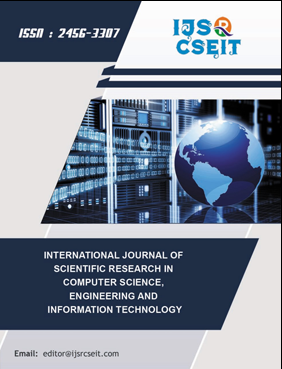A Review : Air Pollution Prediction using Machine Learning Techniques
DOI:
https://doi.org/10.32628/CSEIT241037Keywords:
Neural Networks, Machine Learning, Data IntegrationAbstract
Air pollution poses a critical threat to public health and the environment, necessitating accurate prediction methods for effective mitigation strategies. This paper explores the application of machine learning techniques in predicting air pollution levels, aiming to improve forecasting accuracy and enable proactive interventions. By leveraging diverse data sources, including satellite imagery, weather forecasts, and socioeconomic factors, machine learning models can capture complex relationships between environmental variables and pollutant concentrations. Regression models, neural networks, and ensemble methods are investigated for their effectiveness in air pollution prediction, considering factors such as feature selection, model evaluation metrics, and real-time data integration. Case studies highlight successful applications of machine learning in air quality prediction, demonstrating the potential for scalable and accessible monitoring systems. The findings underscore the importance of continued research in this field to address emerging challenges and advance environmental management practices. By harnessing the power of data-driven insights, we can create healthier and more sustainable communities for current and future generations.
📊 Article Downloads
References
Yan, X., Zhang, T., Du, W., Meng, Q., Xu, X., & Zhao, X. (2024). A Comprehensive Review of Machine Learning for Water Quality Prediction over the Past Five Years. Journal of Marine Science and Engineering, 12(1), 159. DOI: https://doi.org/10.3390/jmse12010159
Gupta, N. S., Mohta, Y., Heda, K., Armaan, R., Valarmathi, B., & Arulkumaran, G. (2023). Prediction of air quality index using machine learning techniques: a comparative analysis. Journal of Environmental and Public Health, 2023, 1-26. DOI: https://doi.org/10.1155/2023/4916267
Manganelli Conforti, P., Fanti, A., Nardelli, P., & Russo, P. (2023, September). Enhancing Air Quality Forecasting Through Deep Learning and Continuous Wavelet Transform. In International Conference on Image Analysis and Processing (pp. 371-382). Cham: Springer Nature Switzerland. DOI: https://doi.org/10.1007/978-3-031-51023-6_31
Mokarram, M., Taripanah, F., & Pham, T. M. (2024). Spatial-temporal analysis of atmospheric environment in urban areas using remote sensing and neural networks. Sustainable Computing: Informatics and Systems, 42, 100987. DOI: https://doi.org/10.1016/j.suscom.2024.100987
Nahar, K. M., Ottom, M. A., Alshibli, F., & Shquier, M. M. A. (2020). Air quality index using machine learning–a Jordan case study. Compusoft, 9(9), 3831-3840.
Chang, Y. S., Abimannan, S., Chiao, H. T., Lin, C. Y., & Huang, Y. P. (2020). An ensemble learning based hybrid model and framework for air pollution forecasting. Environmental Science and Pollution Research, 27, 38155-38168. DOI: https://doi.org/10.1007/s11356-020-09855-1
Singh, K. P., Gupta, S., & Rai, P. (2013). Identifying pollution sources and predicting urban air quality using ensemble learning methods. Atmospheric Environment, 80, 426-437. DOI: https://doi.org/10.1016/j.atmosenv.2013.08.023
Njaime, M., Olivier, F. A., Snoussi, H., Akl, J., Chahla, C., & Omrani, H. (2022, September). Data cleaning to fine-tune a transfer learning approach for air quality prediction. DOI: https://doi.org/10.1109/ISC255366.2022.9921836
Downloads
Published
Issue
Section
License
Copyright (c) 2024 International Journal of Scientific Research in Computer Science, Engineering and Information Technology

This work is licensed under a Creative Commons Attribution 4.0 International License.




